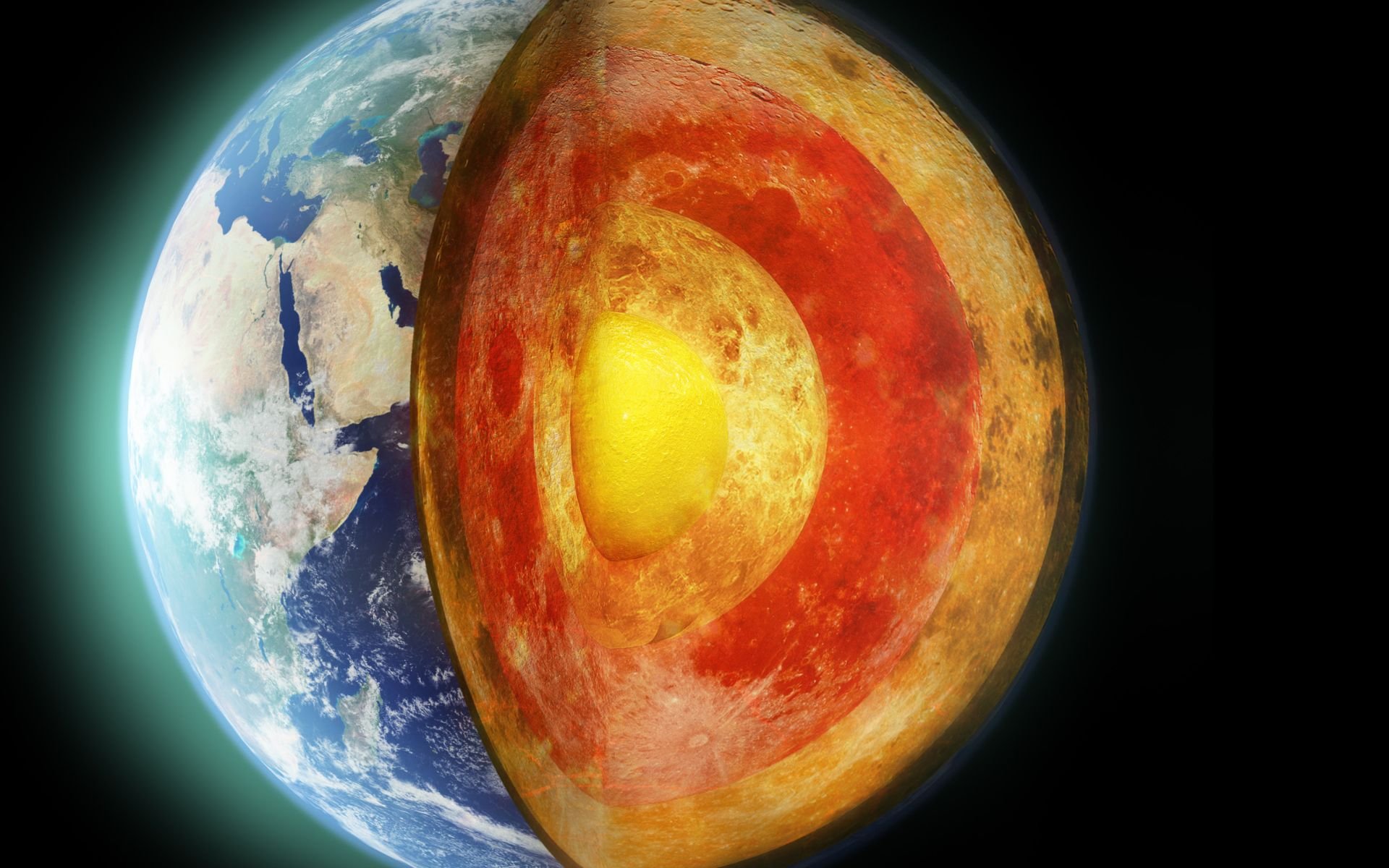A team of Chinese researchers investigating the causes of small changes in the length of the day on Earth, as well as the movement of the planet’s poles, confirmed that: the inner core has a periodic oscillation of about 8.5 years. Based on these values, the authors concluded that there was a change of 0.17 degrees between the inner core and the mantle.
This phenomenon, which indicates that the density of the Earth’s inner core is greater in the northwestern hemisphere, has been previously noted in some seismological records but has never been confirmed. The current measurement may serve as a tool to understand superficial manifestations of the nucleus’ functioning that we do not yet understand.
The inner core of the Earth is a large, solid and dense sphere of iron and nickel, submerged in a layer of molten metal, also composed of iron and nickel. This sphere, with a radius of 1,200 kilometers and separated from the outer core by a boundary interface, plays a fundamental role in the geophysical processes of our planet. Influencing the magnetic field and regulating the overall dynamics of the Earth’s interior.
Earth’s wobble and free rotation
Our “textbook” understanding of the Earth’s rotation assumes a uniform distribution of density in the mantle and core from the center outward, so that the rotation of our core coincides with that of the mantle.
But Dr., co-author of the study and a professor at Wuhan University in China. Hao Ding explains in a post that this is not the case. For him, Results from Earth’s natural oscillations show that density structures in the planet’s interior are “highly heterogeneous.”
He discovered this by chance while analyzing the planet’s polar motion in a study he conducted in 2018, and suggested that there was a relationship between this change and the oscillation of the inner core.
Static gradient between the Earth’s inner core and the mantle
Researchers who wanted to find an explanation for the 8.5-year signal detected in polar motion and changes in day length measured the oscillation amplitudes of the inner core. In both cases, the result was a static tilt angle of 0.17 degrees between the rotation axis of the inner core and the mantle..
Dr. According to Ding, these deviations indicate a clear change in the density of the boundary between the inner core and the layers surrounding it.
These properties can directly affect how the fluid outer core oscillates and rotates. “Static bending can also lead to a certain change in the shape of the liquid core, which can cause a change in liquid motion and a corresponding change in the geomagnetic field,” Ding concludes.
Did you like the content? So stay up to date with more studies like this on TecMundo and take the opportunity to discover where the Earth receives the least light from the Sun.
Source: Tec Mundo
I’m Blaine Morgan, an experienced journalist and writer with over 8 years of experience in the tech industry. My expertise lies in writing about technology news and trends, covering everything from cutting-edge gadgets to emerging software developments. I’ve written for several leading publications including Gadget Onus where I am an author.













